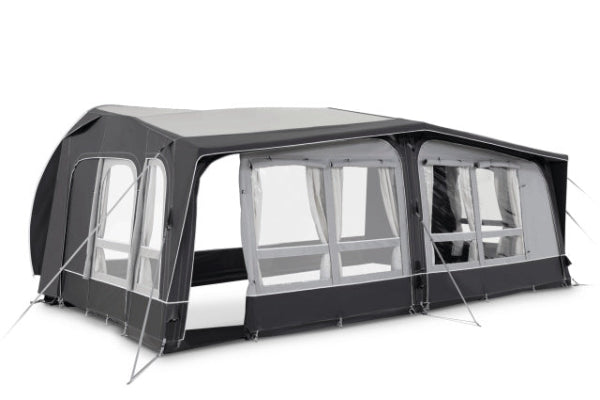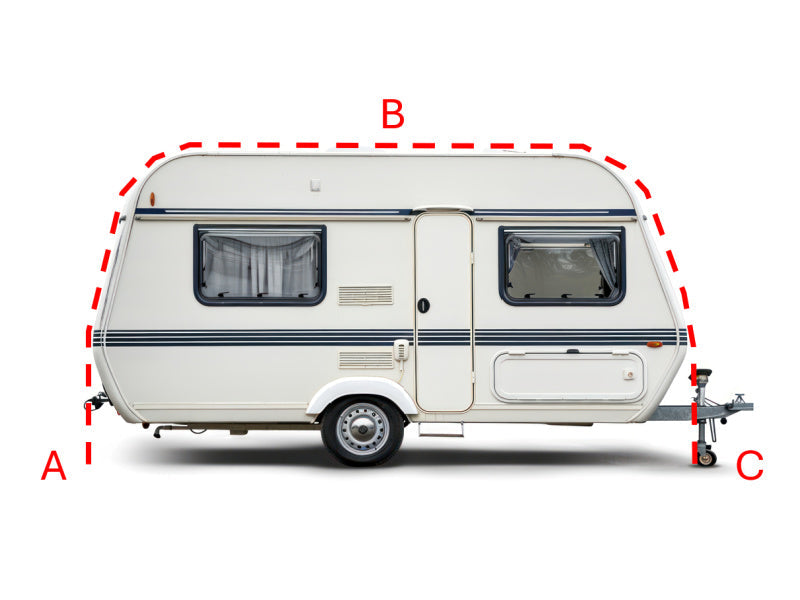Air Awning Puncture: How to Fix Quickly & Easily
Ever heard that dreaded hiss from your caravan air awning? Don't panic! A puncture is completely fixable with basic tools and a bit of know-how. From finding the pesky hole to patching it up properly, we'll guide you through the quick fixes that'll have you back to relaxing in your outdoor space in no time.
Identifying and Locating Punctures

Visual Inspection
The key to fixing any air awning puncture starts with spotting the problem. While some punctures announce themselves with obvious hissing sounds, others can be sneakier, slowly leaking air over several hours.
Start in bright daylight or with a powerful torch. Run hands along every beam and seam of the awning, paying special attention to the corners and connection points where stress often builds up. Look out for tiny tears, worn patches, or areas where the material feels different.
Checking the valves is crucial too. Sometimes what seems like a puncture might just be a loose or damaged valve. Give each valve a thorough inspection, ensuring they're properly sealed and free from debris.
Using Soapy Water Solution
The old soapy water trick remains one of the most reliable ways to find stubborn leaks. Mix a generous squirt of washing-up liquid with warm water in a spray bottle. The solution should be bubbly but not overly thick.
Spray the mixture systematically across the awning's surface. Focus on areas where the material bends or flexes during setup. Watch carefully - even the smallest puncture will create visible bubbles as air escapes.
Keep a roll of masking tape handy. Mark each spot where bubbles appear, as these spots can become hard to find once the soapy solution dries. This mapping technique saves valuable time during the repair phase.

Inflation Tests
Sometimes the simplest methods work best. Inflate the awning to its maximum recommended pressure on a quiet morning. Listen carefully for any tell-tale hissing sounds.
Time how long it takes for the awning to lose pressure. This helps determine whether there's one significant puncture or several smaller ones. A large puncture will cause rapid deflation, while smaller holes lead to gradual pressure loss.
Use chalk or washable markers to divide the awning into sections. Check each section methodically, noting any changes in air pressure. This systematic approach prevents missing any problem areas.
Repairing Punctures
Using a Repair Kit
Modern repair kits contain everything needed for a professional-quality fix. Before starting any repairs, lay out all materials on a clean, dry surface. Check that the patches match the awning material and that the adhesive hasn't expired.
Cleaning and Preparing the Area
Proper preparation makes the difference between a temporary fix and a lasting repair. Start by thoroughly cleaning the area around the puncture. Use clean water and mild soap to remove any dirt, grime, or old repair residue.
Let the surface dry completely. Even slight dampness can prevent proper adhesion. For stubborn dirt, use methylated spirits to ensure a spotlessly clean surface.
If the repair kit includes sandpaper, lightly scuff the area around the puncture. This creates a better surface for the patch to grip. Brush away any dust or debris before moving on to the next step.

Applying the Patch
Cut the repair patch to size, ensuring it extends well beyond the puncture edges. Most experts recommend at least 2-3 centimetres of overlap on all sides. Round the corners of the patch to prevent future peeling.
Apply adhesive evenly to both the patch and the awning surface. Avoid globs or thick spots that might prevent proper bonding. Most adhesives need a few minutes to become tacky - follow the manufacturer's instructions carefully.
Position the patch carefully, starting from the centre and working outward. Use a roller or flat edge to remove any air bubbles. Apply firm, consistent pressure across the entire patch surface.
Let the repair cure fully before testing. While it might be tempting to rush, giving the adhesive proper time to bond saves hassle later. Many repairs need at least 24 hours to reach full strength.
Prevention Tips
Careful Handling and Storage
Prevention beats cure every time. Develop good habits when handling and storing the awning. Never drag it across rough ground or sharp surfaces. Roll rather than fold when packing away.
Store the awning in a cool, dry place away from direct sunlight. Extreme temperatures can weaken the material and adhesives over time. Consider using a dedicated storage bag with proper ventilation.
Regular maintenance checks help spot potential problems before they become serious. Inspect the awning thoroughly at the start and end of each season. Look for signs of wear, particularly around stress points and seams.
Using Groundsheets
A good groundsheet forms the first line of defence against punctures. Choose one slightly larger than the awning footprint. This extra coverage prevents damage from nearby rocks or debris.
Clear the setup area thoroughly before laying the groundsheet. Remove any obvious hazards like twigs, stones, or sharp grass. Take extra time on new or unfamiliar pitches.
Consider using additional protective matting in high-traffic areas. These tough, textured mats protect the groundsheet and provide sure footing in wet weather.
Check and clean the groundsheet regularly during use. Small stones or thorns can work their way onto the surface over time. A quick sweep or shake-out each morning prevents these from causing problems.
By following these detailed steps for identification, repair, and prevention, air awning punctures become a manageable challenge rather than a camping crisis. Regular maintenance and careful handling help ensure many seasons of trouble-free use. Remember that taking time to do repairs properly saves both money and frustration in the long run.
Other content you might like:
- Do air awnings leak?
- Air awning keeps deflating? Here's how to fix it
- Air awning problems: Troubleshoot common issues
- Air awnings in hot weather: What you need to know





Any ideas. We have a caravan awning that must have a small leak. We have checked a few times taking out the inner tube and putting it in water and can’t find any leaks. I’ve also checked the valves. It stays up for hours before it deflates overnight. So must he small. Can you help please
Leave a comment